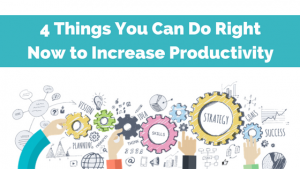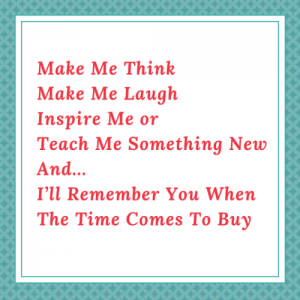September 2, 2016
Outside of working and spending time with my family, there is only one other weekly commitment I stick to – playing soccer. I play in a Tuesday night coed league that at times can be pretty competitive. We are often happy to just have enough players to field a team each night, so we’re always recruiting. While scoping out potential players, we found this guy who was really, really good. Let’s call him Julien. A completely different level than most everyone else – even had pro experience.
One season Julien was free, and we grabbed him to play on our team. He scored a good number of goals, but our team played the worst that season of any in recent memory. It was obvious why – we had brought him on because of his amazing skill and experience, but had failed to consider how well he fit with our team. People didn’t want to play with him because of his attitude and arrogance and some teammates even stopped coming. He would yell at our teammates and complain to the ref constantly. We let Julien go as a free agent at the end of the season, and the following season without him, we won the championship.
This experience has stuck with me and highlights the importance of a thorough and aligned screening strategy – not just for soccer, but more importantly, in the office, as well. I want to ensure that every new teammate we have – on the field or in the office – is going to be a great fit and contribute to our success.
The process of screening candidates is straightforward but sprinkled with pitfalls from illegal questions to picking the wrong conference room. But let’s take a step back and start with a quote from one of the world’s biggest recruiting firms, Robert Half. “No one can know for sure how someone will perform as an employee.” As obvious as that sounds, it is full of wisdom. Screening is more of an art than a science. The manager who best uses processes and data in their screening has a decidedly better shot at a successful outcome than the ‘play it by gut feel’ manager, but there are definitely no certainties in recruiting. That’s why most headhunters offer a 30-day guarantee.
If you haven’t already aligned on what defines your ideal candidate, now’s the time. In fact, you should have done that before you began sourcing candidates. But you can still recover in the screening process as long as everyone in the process is on the same page. Companies will often focus on the soft (attitude) and hard skills (aptitude and experience) when sketching out the ideal candidate, and that is a great place to start.
But where managers often fall flat is projecting into the future and determining the impact they’d like the candidate to make. Not just job functional duties, but what role (not job title) will the candidate play on the team? From my years as a brand marketer, we often used a common marketing tool called Archetypes to map out the role brands play in our world and ensure our communications stay “in-character.” Let’s transport this concept over to hiring and the type of talent we want to hire for each role.
Originally created by Carl Jung as one of his more famous psychological concepts, Archetypes were the representation of his belief that universal, mythic characters – Archetypes – reside within the collective unconscious of humans and are the psychic counterpart of instinct. Here is an Archetype map:

Graphic source: https://twitter.com/emilylizb
Remember Julien, my soccer teammate? We had hoped he’d assume the role of The Hero, but we didn’t vet him properly, and he ended up playing the role of The Ruler – and fell into the trap of being authoritarian, losing the respect of the rest of the team.
When hiring for an individual contributor, for example, having someone in the upper left-hand quadrant probably isn’t your aim. It will also depend on your company culture, the goals of the position, and the function for which you are hiring. An Outlaw, for example, would be a much better fit in Market Operations at Uber than in HR at Walmart. You can similarly map out managers, leaders, and even hire specific archetypes to build the culture in your organization. To help ground the Archetype map, please see the Pop Culture Cheat Sheet from Emily Bennett below.
If you know you would work better with a Merida than a Snow White, make sure you aren’t interviewing a bunch of Innocents. You need someone who can play the role of the Hero, who will display strength, confidence, and competency. You know you need this type of person because with your years of experience, you most fit the role of Sage. (Think Mr Miyagi, Yoda, Gandalf.)
Working through archetypes can help you build a team with complementary skills that excels instead of a team of “me firsts” who can’t connect on any level. In fact, Google’s Project Aristotle spent years researching their talent to prove that the highest-performing teams aren’t those made of the smartest people but those who work well together.
One of the most relevant use cases for us at Wonolo was when we were hiring our first office manager. Beyond the day-to-day of the role, we knew this person would be the culture creator and keep up spirits in office. The question was, did we want a Lover, a Jester, a Caregiver or an Everyman (Regular Gal)? Each archetype could be a perfect fit on experience and skills, but the wrong choice here would completely unbalance the culture.
We ended up going with a Caregiver archetype because we knew we needed someone who would protect the harmony and act as a parent sometimes. We interviewed Jesters who we were attracted to, thinking they could make the workplace a very exciting place to be. In the end, we decided the work and the mission had to be the source of excitement, not the office, and distanced ourselves from the Jester.
For more details on each of the archetypes, Sparkol provides a good summary with brand examples. Weaving archetypes, and more importantly, the underlying motivations, characteristics, and goals, into your screening process will help you model out the ideal candidate and ensure a match across aptitude, attitude, and culture.
As for me, our soccer team is on the lookout for a good Sage. In the meantime, if all this talk of archetypes has piqued your interest, and you’re looking to learn more about what else contributes to the art of screening candidates, I invite you to check out The Definitive Guide to Screening Job Candidates.
Business & Finance Articles on Business 2 Community(58)






